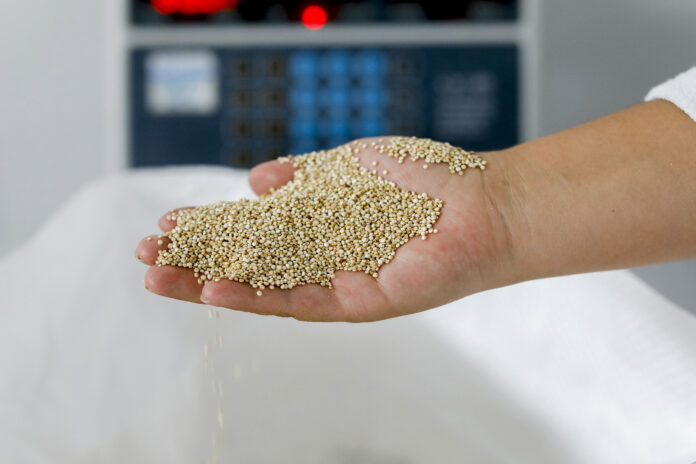It only took about 7,000 years, but quinoa has finally arrived in the American mainstream.
Better late than never for the ancient whole grain first cultivated in the Andes region of South America. The nutritional powerhouse packs protein and carbohydrates – two essential macronutrients the body needs in large amounts.
In the 2010s, quinoa started to transform from a trendy so-called superfood to a pantry staple. The United Nations declared 2013 “the international year of quinoa.” According to the U.N., only eight countries were growing quinoa in 1980. By 2015, that number was 95.
Quinoa is one of the many ways to get protein from nonanimal sources, said Dr. Maya Vadiveloo, an associate professor of nutrition at the University of Rhode Island in Kingston. Overall, people should aim for a dietary pattern rich in a variety of fruits and vegetables, with whole grains, nontropical oils and proteins that are mostly plant-based, while avoiding sugary drinks and most ultra-processed foods. Eating quinoa “is a nice way to increase plant-based protein and whole grains simultaneously,” she said.
One cup of cooked quinoa boasts 39 grams of carbohydrates and 8 grams of protein. Carbs are “the preferential fuel for our brain,” Vadiveloo said. Protein, meanwhile, helps you feel fuller longer. It’s also important for strengthening bones and building muscle.
“As people are shifting toward more plant-based foods, there’s a misconception about how much protein people need,” Vadiveloo said. Many people think their diets don’t have enough, not realizing they can get protein not just from meat or eggs but from sources like quinoa, nuts, seeds and legumes such as beans, peas or lentils.
Individual protein needs vary, so the U.S. Department of Agriculture offers a calculator on its website to help people figure out how much they need.
Don’t go against the grain
Quinoa, which comes in red, black and white varieties, is classified as a pseudocereal – seeds from non-grass plants used like cereal grains. It’s often treated like rice, and it can make a great base for poke bowls or protein bowls. It also can be served as a side dish .
Like rice, quinoa is naturally gluten-free, Vadiveloo said, making it a carb option for people with celiac disease. Carbs, particularly from nutrient-dense sources such as fruits, vegetables and whole grains, should account for 45% to 65% of daily calories in a well-rounded diet, she said.
As a protein, quinoa is a source of all nine essential amino acids that the body needs to function. But people must get them from food because the body doesn’t produce them. As a whole grain, quinoa is a good source of several B vitamins that play a key role in metabolism and a healthy nervous system, as well as dietary fiber, which can lower the risk for heart disease, diabetes and obesity.
As healthy as quinoa can be, Vadiveloo said it’s important to eat a variety of whole grains. “There’s benefits to eating whole grains, and quinoa is just one of them,” she said.
From soups to salads
To make quinoa more flavorful, Vadiveloo suggests cooking it in a low-sodium broth or adding onion or garlic. Quinoa can be used in a wide variety of recipes, from soups and meatloaf to salads and muffins.
If the soft, somewhat chewy texture of quinoa is a deal-breaker, whole grains like brown rice, buckwheat and oats share many of quinoa’s health benefits.
“If you don’t like quinoa, there’s plenty of other whole grains to try,” Vadiveloo said. “I’d keep encouraging people to find things that they like and find different ways to prepare it.”
Eat It or Leave It? is an American Heart Association News series that takes a closer look at the health benefits and drawbacks of specific foods and drinks.




